
Few things are as frustrating as sitting down to watch a movie, join a virtual meeting, or listen to music only to realize your laptop has no sound. In this guide, we'll walk you through effective troubleshooting methods. Let's take a look together!
Common Reasons for No Sound on a Laptop
Before diving into solutions, it's important to understand the potential causes of audio issues:
Muted or low volume settings: Volume controls may have been accidentally adjusted or muted.
Faulty or outdated audio drivers: Drivers manage communication between your hardware and software, and outdated drivers can cause problems.
Audio device misconfiguration: Incorrect audio device settings can prevent sound from being output.
Hardware issues: Physical damage or malfunctioning audio components can also lead to sound loss.
Now that we've identified some common causes, let's explore how to fix them.
Solution 1: Check Volume Settings
Sometimes, the solution is as simple as unmuting your device or increasing the volume.
Click on the speaker icon in the taskbar and ensure the volume is not muted.

Adjust the slider to increase the volume.
Open the application you're using and ensure its volume settings are not muted or too low.
Many laptops have dedicated keys to mute, lower, or raise the volume. Test these to ensure sound is enabled.
Solution 2: Verify Your Playback Device
Your laptop may be set to use the wrong audio output device, especially if external devices have been connected recently.
Right-click the speaker icon in the taskbar and select Sound settings.
Under Output, check the selected device.
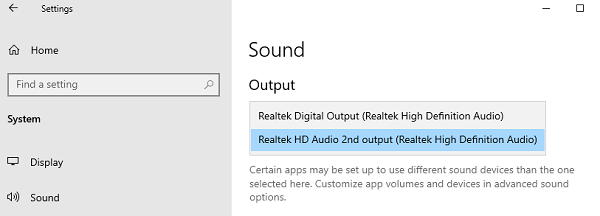
Choose your laptop's built-in speakers or the connected audio device as the default.
Test the device by playing audio.
For clarity, disable any unused playback devices by right-clicking them and selecting Disable.
Solution 3: Update or Reinstall Audio Drivers with Driver Sentry
Outdated or corrupted audio drivers are a common culprit behind sound issues. Using Driver Sentry, a reliable driver management tool, can help resolve this quickly.
Visit the official Driver Sentry website and download the software.
Open Driver Sentry and click Scan to detect outdated or problematic drivers.
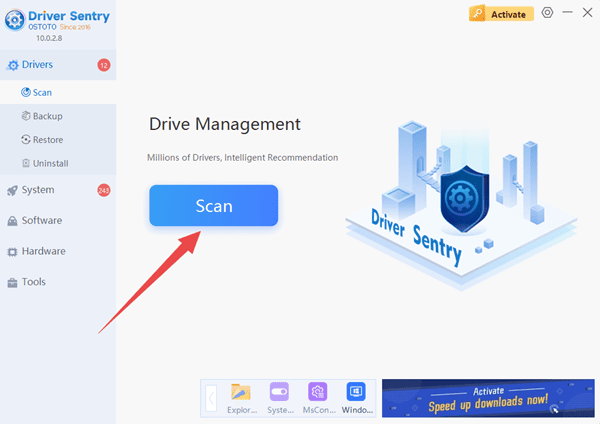
The tool will identify your audio driver and provide the latest compatible version.
Click Upgrade to automatically download and install the driver.
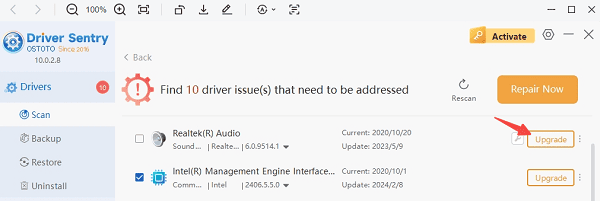
After the update, restart your device to ensure the changes take effect.
Solution 4: Check Audio Troubleshooter
Windows includes a built-in audio troubleshooter that can automatically detect and fix common sound problems.
Press Win + I to open Settings, then navigate to System > Update & Security > Troubleshoot > Additional troubleshooters.
Under Playing Audio, click Run.
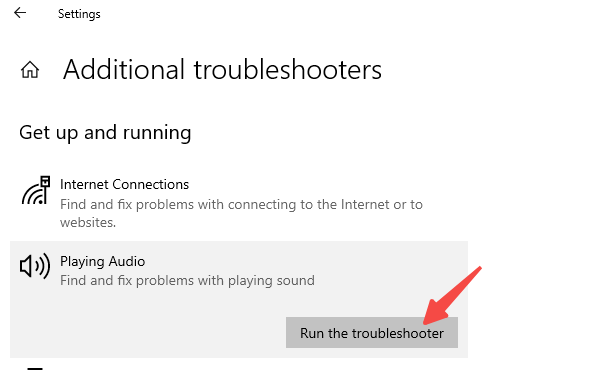
The troubleshooter will scan for problems and attempt to resolve them automatically.
Once the process is complete, play audio to confirm the issue is resolved.
Solution 5: Inspect Audio Hardware
If the above methods don't work, the issue might lie with your laptop's hardware.
Connect external speakers or headphones to test if the problem is with your laptop's internal speakers.
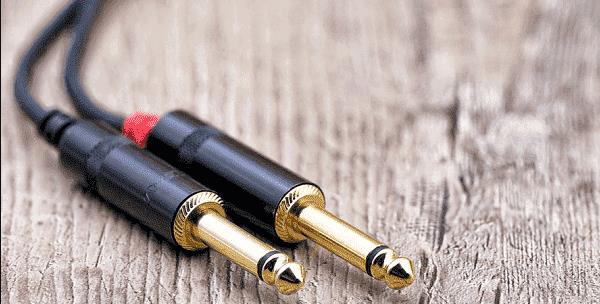
Ensure the headphone jack is free of dust or debris, which might block sound.
If you suspect hardware damage, consult a technician or your laptop's manufacturer for assistance.
Frequently Asked Questions
Q1: Can I fix sound issues without installing new drivers?
Yes, sometimes adjusting settings or using the Windows troubleshooter is enough. However, updating your drivers with tools like Driver Sentry ensures long-term stability and compatibility.
Q2: What if only some applications have no sound?
This may be due to app-specific volume settings or a conflict in playback devices. Check each app's settings individually.
Q3: What if my laptop still has no sound after trying these solutions?
If none of these solutions work, it could indicate a deeper hardware issue. Consider consulting a technician for further assistance.
A laptop with no sound can disrupt your productivity and entertainment, but most audio issues can be resolved with the right steps. From checking volume settings and playback devices to using Driver Sentry to keep your drivers updated, these solutions will help you restore audio functionality in no time.
See also:
Steps to Update BIOS on a Computer
How to Fix Windows Msvcr120.dll Missing
How to Fix a Wireless Mouse Not Working
Guide to Fixing the "Print Spooler Service Not Running" Error